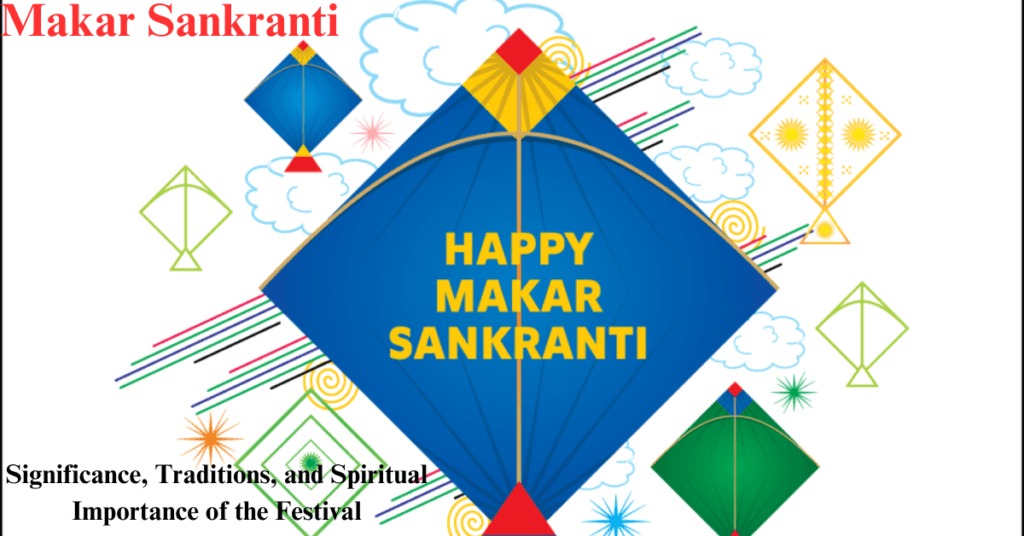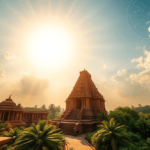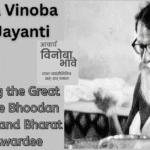
Table of Contents
Makar Sankranti: Significance, Traditions, and Spiritual Importance of the Festival
Makar Sankranti :It is one of the most important and widely celebrated festivals in India. Held annually on January 14th, it marks the Sun’s transition into Capricorn (Makar) and is a vibrant celebration of harvest, spirituality, and unity across the country. The festival, which signifies the end of winter and the beginning of warmer days, holds deep cultural, spiritual, and agricultural significance.
What Is the Significance of Makar Sankranti?
Makar Sankranti marks the solar transition when the Sun enters Capricorn, signaling the start of Uttarayan (northward journey of the Sun). This momentous event is crucial not only for its astronomical importance but also for its spiritual significance. The festival is seen as a time for renewal, positivity, and the start of brighter days.
In Hindu mythology, Makar Sankranti is associated with the Sun God visiting his son, Shani (Saturn), symbolizing the triumph of light over darkness. It is also believed to be the day when Bhishma Pitamaha, from the Mahabharata, left his mortal form, as he waited for the Sun’s journey toward the north.

Regional Traditions and Celebrations of Makar Sankranti
It is celebrated in various ways across different regions in India, each with its own unique customs and rituals.
- Lohri in Punjab: In Punjab, Makar Sankranti is celebrated as Lohri, a festival that marks the end of the winter season and the beginning of the harvest season. People gather around bonfires, sing traditional songs, and dance the Bhangra and Gidda. The exchange of tilgul (sweet sesame and jaggery treats) is common, symbolizing goodwill.
- Pongal in Tamil Nadu: Pongal, celebrated in Tamil Nadu, is a multi-day festival that includes the cooking of Pongal (a sweet dish made of rice, jaggery, and coconut) as an offering to the Sun God. It honors nature’s abundance and the hardworking farmers.
- Khichdi in Uttar Pradesh and Bihar: In Uttar Pradesh and Bihar, Makar Sankranti is marked by preparing Khichdi, a dish made from rice and lentils, symbolizing health and prosperity. People also take ritualistic dips in sacred rivers like the Ganges to purify themselves.
- Kite Flying in Gujarat: Gujarat witnesses spectacular kite flying on Makar Sankranti. The skies are adorned with vibrant kites, a tradition that symbolizes the uplifting of one’s spirits and the joys of the harvest.
- Sankranti Celebrations in Karnataka and Andhra Pradesh: In Karnataka and Andhra Pradesh, Makar Sankranti is marked by colorful decorations, offering prayers, and flying kites. The festival brings communities together to celebrate the harvest and offer gratitude for a bountiful year.
Spiritual and Agricultural Importance of Makar Sankranti
- Spiritual Significance: Makar Sankranti is considered an auspicious day for performing spiritual practices. The day marks the commencement of Uttarayan, a period when the Sun is believed to be more auspicious and powerful. People take early morning dips in holy rivers, especially the Ganges, to cleanse their bodies and souls, seeking blessings for prosperity and good health.
- Agricultural Significance: Makar Sankranti is deeply linked to agriculture, as it coincides with the end of the winter crop harvest. Farmers give thanks for the abundant crops of sugarcane, wheat, and mustard and pray for good yields in the coming year. It is a time of gratitude for nature’s bounty and a celebration of the hard work of farmers.
Rituals and Customs on Makar Sankranti
- Tilgul and Sweets: Exchanging tilgul (made from sesame seeds and jaggery) is a popular custom on Makar Sankranti. People offer these sweets to each other with the message: “Tilgul ghya, god god bola,” meaning, “Take this tilgul and speak sweetly.” This exchange promotes goodwill, unity, and peace.
- Bonfires and Celebrations: Lighting bonfires is common in many regions, symbolizing the burning of past hardships and welcoming new beginnings.
- Kite Flying: In several parts of India, particularly Gujarat and Maharashtra, people indulge in the joyous activity of kite flying, which has become a significant tradition of Makar Sankranti.
- Holy Dips and Prayers: Taking a dip in sacred rivers, like the Ganges, is considered highly auspicious. People gather at river banks to offer prayers and perform rituals that purify the mind and soul.
Makar Sankranti and Its Universal Appeal
Makar Sankranti transcends regional boundaries and is celebrated across India in various forms, symbolizing the unity of the people, the connection with nature, and the joy of harvest. Whether it’s the spiritual aspect of offering prayers and taking holy dips, the agricultural significance of thanking nature for its bounty, or the cultural traditions of exchanging sweets and flying kites, Makar Sankranti brings people together in a collective celebration of life and prosperity.
MakarSankranti, #SignificanceOfMakarSankranti, #MakarSankranti2025, #HarvestFestival, #Uttarayan, #SpiritualJourney, #IndianFestivals, #KiteFlying, #MakarSankrantiRituals, #MakarSankrantiTraditions, #IndianCulture, #SunGod, #MakarSankrantiCelebrations
Conclusion: Makar Sankranti – A Time for Renewal and Gratitude
Makar Sankranti is much more than just a festival; it is a celebration of nature’s rhythms, the agricultural cycle, and spiritual renewal. As the Sun embarks on its northward journey, the festival symbolizes new beginnings, triumph over darkness, and the joy of unity and togetherness. It is a reminder to appreciate the little things in life – like the warmth of the Sun, the fruits of labor, and the sweetness of human relationships. Celebrating Makar Sankranti is a celebration of life itself, filled with joy, hope, and positivity.
The Traditional Story of Makar Sankranti
Long ago, in a small village, there lived an elderly Brahmin named Acharya Vishwanath. He was renowned for his asceticism and knowledge, and his life was simple, always devoted to truth, dharma, and tradition. Acharya Vishwanath had one principle: “The person who includes truth and hard work in their actions is the one who truly gains the wealth of life.”
One day, just before Makar Sankranti, the village buzzed with excitement. Everyone was preparing for this special day. Makar Sankranti marked the Sun’s transition into Capricorn, and it was seen as a time for new beginnings and the harvest festival. The villagers were planning grand celebrations for the day, but some began to question the need for all the festivities.
“Acharya Ji,” a young man asked, “On Makar Sankranti, we fly kites, eat til (sesame seeds) and gud (jaggery), and dance. Doesn’t all of this distract us from our true purpose in life?”
Acharya Vishwanath smiled and replied calmly, “The answer to your question lies in an old story.”
And then, Acharya Vishwanath began to narrate the tale:
“Long ago, there was a great war between the gods and the demons. The demons were growing stronger, and the gods were in fear. The gods went to Lord Vishnu and prayed for his help. Lord Vishnu revealed a special remedy. He said, ‘When the Sun enters Capricorn, gather together and perform a grand yajna (sacrifice). This yajna will diminish the power of the demons.'”
“The gods followed Lord Vishnu’s advice. On Makar Sankranti, when the Sun entered Capricorn, all the gods gathered to perform a magnificent yajna. They offered til, gud, and sacred garments. This yajna not only defeated the demons but also increased love, unity, and harmony among the gods.”
“After the yajna, the gods flew kites in the sky because flying kites symbolized the transmission of celestial energy. This act also had the purpose of sending positive energy into their lives. Along with that, they ate til and gud, as it would bring warmth to their bodies and good fortune.”
Acharya Vishwanath finished the story and said, “Makar Sankranti teaches us that through unity, hard work, and self-confidence, we can triumph over any battle in life. This day encourages us to respect our actions and stay connected to our traditions. Flying kites, eating til and gud, and dancing are not mere pastimes; they are ways to keep our faith and traditions alive.”
The young man understood and bowed to Acharya. He thought, “Indeed, Makar Sankranti is not just a harvest festival; it also offers us the opportunity to steer our lives in a positive direction and promote unity and brotherhood.”
The villagers continued to celebrate the day with great joy. Acharya Vishwanath’s story helped everyone understand that Makar Sankranti is not just a festival of agriculture, but a reminder to walk the right path in life, following the guidance of tradition.
Also Read This :
Lohri 2025: Celebrating Bountiful Harvest, Prosperity & Joy on January 13th


